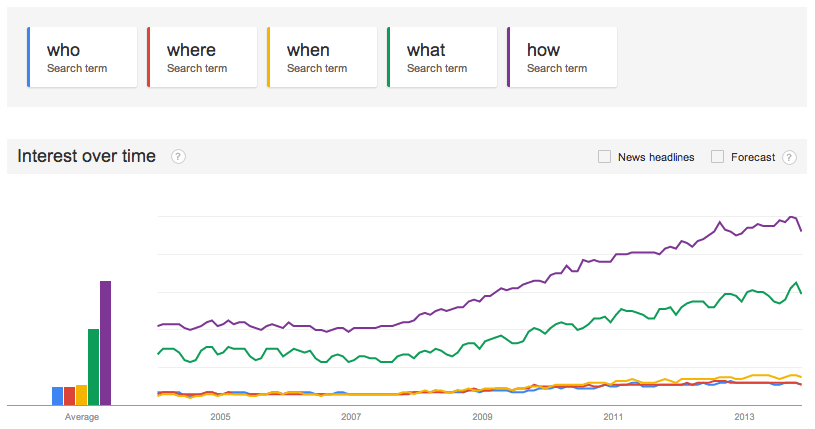How to Get Found with Search (and Hummingbird)
Google Search Updates, Algorithms, Pandas, Penguins and Hummingbirds
You may have heard of Google’s biggest most recent search engine update called Hummingbird, but do you know what it does and how it impacts your search engine results placement? In other words, how does Hummingbird affect your business?
This post covers a little history of algorithms, Hummingbird and what you need to do now to increase your search engine rankings.
First let’s understand what a search engine does. A good search engine will index all content available on the web and then serve up results based on any given search. So if you’re looking for organic blueberry chocolate (without quotes) the engine will provide you with what it considers to be the most appropriate results for your particular search. For a search on organic blueberry chocolate today, Google found about 37,900,000 results (in 0.32 seconds). That means there are 37,899,990 other web results competing for page one placement when people search for organic blueberry chocolate.
How does the engine know which sites to show the person searching (user)?
That’s where the algorithm comes in. An algorithm is a mathematical formula, which calculates the appropriateness of each search result based on each person’s search. So if someone searched for How to make organic blueberry chocolate we will see a different set of results, because Google understands that the search is different. The first search (for “Organic blueberry chocolate”) is likely being performed by someone interested in buying some chocolate and the other search is about learning how to make it. Those two things are quite different. Ponder on that for a minute.
I hope you’re starting to understand that the search engine is trying to be smart and doing it’s best to offer you as the user, the best experience by providing the most appropriate search results. So you want to know a couple of things.
1. How does the engine figure out which sites are the best ones to show?
And
2. How do you get your website or page to show on page one of Google?
Right?
Yes, well that’s where the Hummingbird comes in. Let’s dig a little deeper.
Before Hummingbird there were a few other updates that were talked about in search engine optimization and marketing circles. Most recently, these were Panda and Penguin. Both of them were Google’s way of getting rid of junk content or spammy websites that were cluttering up it’s index and muddying the search results. These were a couple of the bigger updates and gave the search engine marketing industry something to talk about, but in reality Google makes hundreds of algorithm changes per year. According to Moz, “Google makes 500 – 600 algorithm changes per year.”
What are these changes and why does Google make them you ask?
Sometimes the changes are small ones to shift the way the best quality search results are calculated and to keep search engine optimizers on their toes. Other times there are updates to penalize black hat (read unethical) SEOs for trying to game the engines. And yet other times there are major overhauls of the algorithm or engine to make it perform better in numerous ways. Hummingbird is such an update. It is like a replacement of the entire engine instead of just the replacement or repair of a part of it.
Danny Sullivan of SearchEngineLand.com says that one of the reasons for the name of the Hummingbird updates is because it is “precise and fast.” If you’ve ever seen a hummingbird, they are amazingly small birds with super powerful wings and thrust. They also seem to understand exactly where their food is based on color and scent and can quickly and efficiently retrieve the energy they need to sustain such an active little lifestyle.
While other updates focused on penalties to sites for keyword stuffing, bad inbound links and poor PageRank, Google’s Hummingbird’s main change is focused around understanding what the user wants. In search and web marketing this is known as user intent and a huge amount of energy has gone into being able to understand user intent in order to provide the most appropriate search results. According to Giselle Aguiar, “Hummingbird looks for natural language — well-written (no typos or grammatical errors), high-quality content on webpages.
Google’s goal in all this is to give the searcher exactly what they’re looking for. Google now wants fresh, relevant content written for the human reader.”
And in a recent case study, Giselle found a way to attract the Hummingbird to the feeder. How? She posted to a blog at least 3 times a week with one of them being a video. Because YouTube is the 2nd largest search engine after Google and YouTube is also owned by Google, “embedding video in a blog post combines the best of both worlds.” And Giselle is not a trailblazer there are many other SEOs backing her up. James Wedmore will tell you this as well. Just look at how many “How to…” articles he has posted on his homepage.
MarketingTypeGuys.com says “businesses that take the time to write content that addresses common questions from consumers, will find themselves naturally rising to the top of Google’s search results pages.”
And Salman Aslam writes: “This doesn’t change everything about the way we do SEO, but, we need to now put less focus on specific keywords and instead, think about what the user is thinking/needing/feeling when they’re searching – and then give them the most relevant content and experience possible. As a site owner, this is your responsibility too.”
Salman also brilliantly shows how there has been a significant increase in the number of “how” and “what” words in search queries over the last few years. Look at his chart here  and read his thoughts on Hummingbird strategies.
and read his thoughts on Hummingbird strategies.
Last but not least, we still have lots to learn from the pool salesman, Marcus Schneider who was able to sell tons of fiberglass pools in a dwindling economy just by understanding his audience’s needs.
So how do you get found with search?
In Summary:
1. Focus on good content that will be useful to your audience.
2. Answer questions that your customers are asking.
3. Write blog posts frequently and embed videos in them for your own Jab Jab, Right Hook combination.
4. Remember that SEO is a marathon and not a sprint. Content marketing takes time. Know your audience, understand your market and always provide value.
5. Help people find what they are looking for. Answer search questions.


